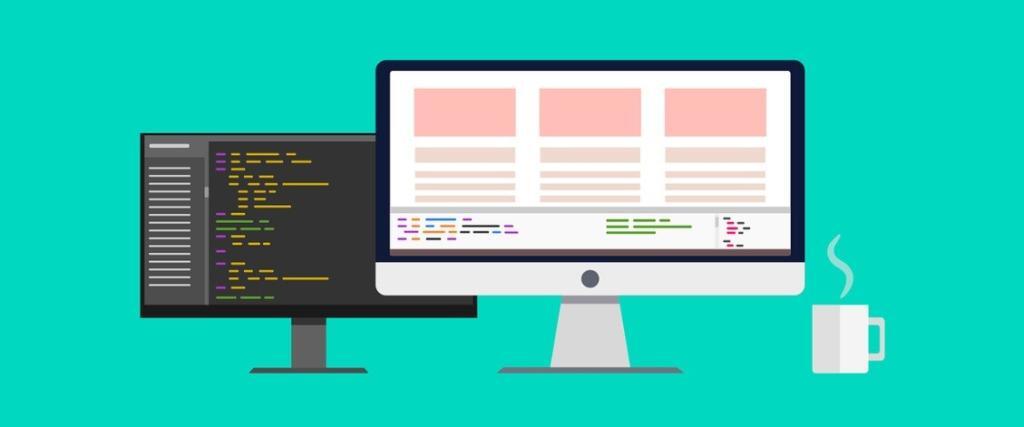Java is a versatile and prominent computer programming language that powers countless applications and systems across various industries.
Whether you’re a beginner just starting your programming journey or an experienced developer looking to enhance your Java skills, this comprehensive guide will provide you with worthy tips, tricks, and best practices for developers to excel in Java development.
From mastering the fundamentals to leveraging advanced techniques, let’s dive into the world of Java and unlock its full potential.
The Power of Java’s Platform Independence:
One of the primary reasons Java has revolutionized software development is its platform independence.
With the Java Virtual Machine as its foundation, Java code can run on various operating systems without requiring modifications. This portability has permitted developers to construct applications that work seamlessly across distinct platforms, from desktops to mobile devices and even embedded systems.
Java’s Robustness And Reliability:
Java’s strong emphasis on reliability and robustness has played a significant role in revolutionizing software development. The language enforces strict compile-time checks, minimizing the likelihood of common programming errors. Additionally, Java’s exception-handling mechanism permits developers to write code that gracefully handles errors and ensures application stability.
The Developer’s Journey With Java:
Revolutionizing software development with Java is a journey for developers. Starting with a solid understanding of core Java concepts, developers expand their knowledge by exploring advanced topics such as database integration, design patterns, and distributed systems.
Continuous learning, staying updated with the latest Java releases, and actively participating in the vibrant Java community contribute to a developer’s growth and ability to construct innovative solutions.
Leveraging Tools And Integrated Development Environments:
Java developers have access to a wide range of tools and IDEs that enhance their productivity and streamline the development process.
IDEs like Eclipse, IntelliJ IDEA, and NetBeans offer features such as debugging, code completion, and built-in support for version control systems. Additionally, build tools automate dependency management and project building, enabling developers to focus on writing high-quality code.

Tips And Best Practices:
Follow The Object-Oriented Paradigm:
Java is an object-oriented language, and it’s crucial to embrace the principles of object-oriented programming. Encapsulate related data and behavior within classes, strive for loose coupling, favor composition over inheritance, and follow SOLID principles to ensure extensibility, modularity, and code reusability.
Use Meaningful And Consistent Naming Conventions:
Choose descriptive names for variables, classes, methods, and packages. Following standard naming conventions, such as using PascalCase for classes, lowercase for packages, and CamelCase for methods and variables, enhances code readability and makes it easier for other developers to comprehend and maintain your code.
Proper Exception Handling:
Java provides a robust exception-handling mechanism. Ensure that you handle exceptions appropriately by using try-catch blocks or propagating them to the calling code when necessary.
Catch-specific exceptions rather than using generic catch blocks, as it enables better error diagnostics and handling.
Effective Memory Management:
Java’s garbage collector automatically manages memory, but it’s essential to be mindful of memory usage.
Avoid unnecessary object creation, release resources explicitly, and employ tools like profilers to identify and optimize memory-intensive parts of your code.
Properly managing memory helps prevent memory leaks and enhances overall application performance.
Optimize Performance With The Collection Framework:
Java’s Collection Framework provides a rich set of data structures. Choose the appropriate collection type based on your requirements to optimize performance.
Understand the time complexity of various collection operations and use efficient algorithms when dealing with large data sets.
Leverage Multithreading And Concurrency:
Java offers powerful concurrency utilities such as locks, threads, and concurrent collections. However, threading can be complex.
Employ thread-safe data structures, synchronization mechanisms, and higher-level abstractions like CompletableFuture and Executors to write concurrent code safely and efficiently.
Write Clean And Maintainable Code:
Adhere to clean code practices, such as keeping methods and classes concise, applying the single responsibility principle, and favoring code readability over clever optimizations.
Employ meaningful comments, write self-explanatory code, and refactor regularly to keep the codebase clean and maintainable.
Test-Driven Development:
Adopt test-driven development as a practice to ensure robustness and minimize defects. Write tests before implementing code, cover edge cases, and automate the testing process using frameworks like TestNG or JUnit.
Continuous integration tools can further facilitate automated testing in your development workflow.
Stay Updated With Java Releases:
Keep track of new Java versions and language features. Regularly upgrade to the latest stable versions to benefit from performance improvements, bug fixes, and new language enhancements.
Understand the impact of new features on existing code and leverage them appropriately.
Utilize Development Tools And IDEs:
Make effective use of Integrated Development Environments like Eclipse, IntelliJ IDEA, or NetBeans. These tools provide features like code completion, refactoring support, debugging capabilities, and integration with build tools, enabling you to write code more efficiently and identify potential issues.
Supporting Modern Development Practices:
Java has continuously evolved to support modern development practices and stay relevant in the ever-changing technology landscape.
With the introduction of features like streams, lambda expressions, and the modular system, or Java Platform Module System, Java enables developers to write more expressive, concise, and maintainable code. Additionally, the adoption of agile methodologies and DevOps practices have been seamlessly integrated into Java development workflows.
Java’s Role In Modern Technologies:
Java’s impact extends beyond traditional software development. It has found its way into modern technologies such as big data processing, including Apache Spark and Apache Hadoop, machine learning or Java libraries like DL4J or Deeplearning4j, and Internet of Things applications.
Java’s versatility and scalability make it a preferred choice in these cutting-edge domains, revolutionizing industries and shaping the future of technology.
Conclusion:
Mastering Java development requires a combination of solid fundamentals, continuous learning, and the application of best practices.
By comprehending the core concepts, adopting clean coding practices, and employing the rich ecosystem of libraries and tools, developers can create robust, scalable, and secure applications.
Embrace the tips, tricks, and best practices discussed in this guide and embark on your journey to becoming a proficient Java developer. The possibilities in the world of Java development are countless, and with dedication and practice, you can unlock its full potential.
You may want to read more,








